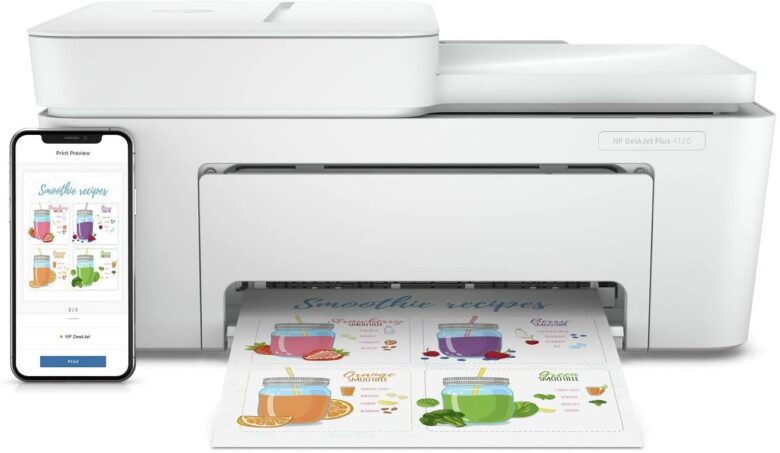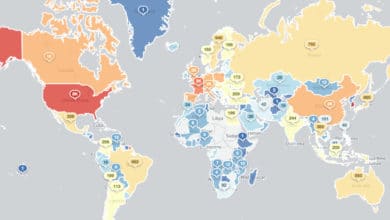
If you are currently looking for a suitable printer, you will quickly realize that the selection is sheer gigantic. There are not only many different printer manufacturers. On top of that, each company also has different devices to offer. But how can you filter out the right printer from all the different ones? One factor that should definitely help you decide is the maximum print resolution. How high the resolution of a printer is, is given by the manufacturer in the size “dpi”. This abbreviation stands for “dots per inch”. Thus, the corresponding number tells you how many dots the printer prints per inch. The more dots there are, the higher the resolution and the sharper the printed image.
Important terms about print resolution
Of course, talking about pixels per inch is only a very rough paraphrase. But what exactly does this manufacturer specification mean? Actually, it would make more sense to speak of ink drops instead of pixels. After all, the value indicates the maximum number of drops that can be printed per inch in a row. However, this can lead to a lot of confusion. After all, the print head of a printer does not only make movements in a row. There are also movements that are made from top to bottom. Here it is important to pay close attention to the manufacturer’s specifications.

Some printer manufacturers solve the problem by specifying two values for the dpi. For example, HP, one of the largest printer manufacturers, specifies the value 4,800 x 1,200 dpi for its DeskJet 4120. This states that the multifunction device can print 4,800 dots in a row and 1,200 dots from top to bottom. This means it prints a total of 5,760,000 dots per square inch. Unfortunately, not all manufacturers act this way. Instead, some try to dazzle the customer. The reason for this is that the second value is often referred to as lpi (line per inch) in technical jargon. Accordingly, some only specify the first value, which is always the higher of the two. So if you only see one value in the dpi value of your printer, you should keep in mind that there is also a second value. Even if the first value may be high, a weak second value can lead to a poor print result.
Choose good paper
The print resolution of your device can be as good as it is. If you use inferior paper in the printing process, even a great printer will only get a satisfactory result at most. After all, it’s no use if the device offers a high resolution, but this is ultimately not visible on the paper. To achieve razor-sharp results, you should use a smooth special paper. This does not absorb the ink, but can be printed accurately by the device. However, you should keep in mind that such paper is also associated with higher costs. So always use the paper according to its use. You don’t have to print a plain text document on high-quality photo paper.
Thanks to superimposed printing dots, the end result is better
In the vast majority of printers, the printed dot is circular. Should the devices work in such a way that they print dot by dot separately from each other, one would have disturbing gaps in the final result. The aim is therefore to ensure that the printing dots overlap in a targeted manner. This is the only way to achieve a uniform end result. Of course, printers with a high resolution also have a decisive advantage here. By setting more dots, they can ensure a uniform and clean end result.

At the latest when you print images with high-contrast colors, this becomes noticeable. After all, the more print dots, the better the color transitions between the individual elements. The more dpi a printer is capable of, the better the color gradation. Here again, however, we have to refer to the paper quality. It is true that a direct comparison between low-resolution and very high-resolution printers shows a difference even with inferior paper. However, this only becomes really clear with high-quality printer paper.
The image source does not have to be high-resolution
We have now already explained that, apart from the printer itself, the paper also has a decisive influence on the eventual print quality. But what about the image source? What resolution should it have? Here, the size of the sheet to be printed is clearly in the foreground. For example, the original resolution of a photo print the size of a painting should of course be higher than that of a small family photo for the desk. But the megapixels of your camera don’t play too big a role here. After all, just 0.8 megapixels are enough to display a pin-sharp image on a monitor with a resolution of 1,920 x 1,080 pixels (full HD). Accordingly, the number of megapixels should grow parallel to the desired size of the print. The larger the paper to be printed, the more megapixels your camera should have.
Keep the viewing distance in mind
To help you decide on the right print resolution, you should also keep in mind the viewing distance. While a brochure is very close to your eyes, a photo print for the wall is usually much further away from your face. Basically, the closer the print is to be viewed, the higher the print resolution should be. This also has an economic advantage, especially for large posters. Without limiting the optical quality, you can save a lot of ink and therefore money. After all, your brain can no longer tell the difference between a very high and a rather low print resolution from a certain distance anyway.
What are the most common print resolutions?
If you take a look at the print resolutions of today’s printers, you will quickly notice differences between types of printers. Laser printers, for example, usually come in the standard resolution of 600 x 600 dpi. The situation is different with inkjet printers. Here, a value of 4,800 x 1,200 dpi, as with the HP device mentioned above, is not uncommon. In some cases, the values shoot up even further. Thus, there are now devices that are advertised with a dpi value of 9,600 x 2,400.
Conclusion: decide depending on the application
If you are about to choose a new printer, the print resolution is definitely an important criterion. However, you should keep in mind that this is not everything. Other criteria such as the choice of paper and the quality of the image source are just as important. If you mainly print texts and not graphics or pictures, you will be more than happy with an average device. However, if you want to print photos on a regular basis, a printer with a high print resolution in combination with high-quality paper is a no-brainer.




No replies yet
Neue Antworten laden...
Administrator
Beteilige dich an der Diskussion in der Basic Tutorials Community →